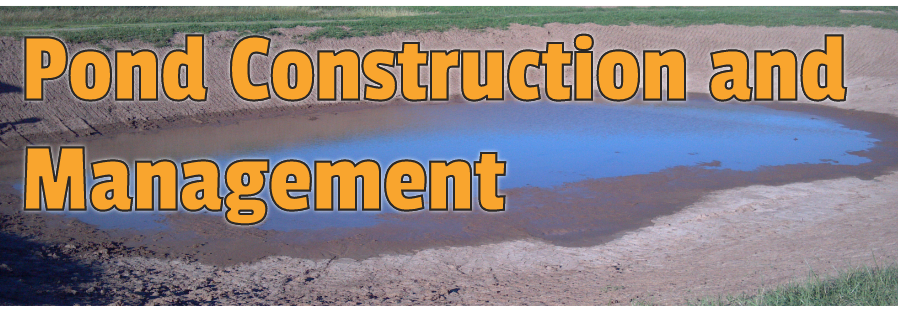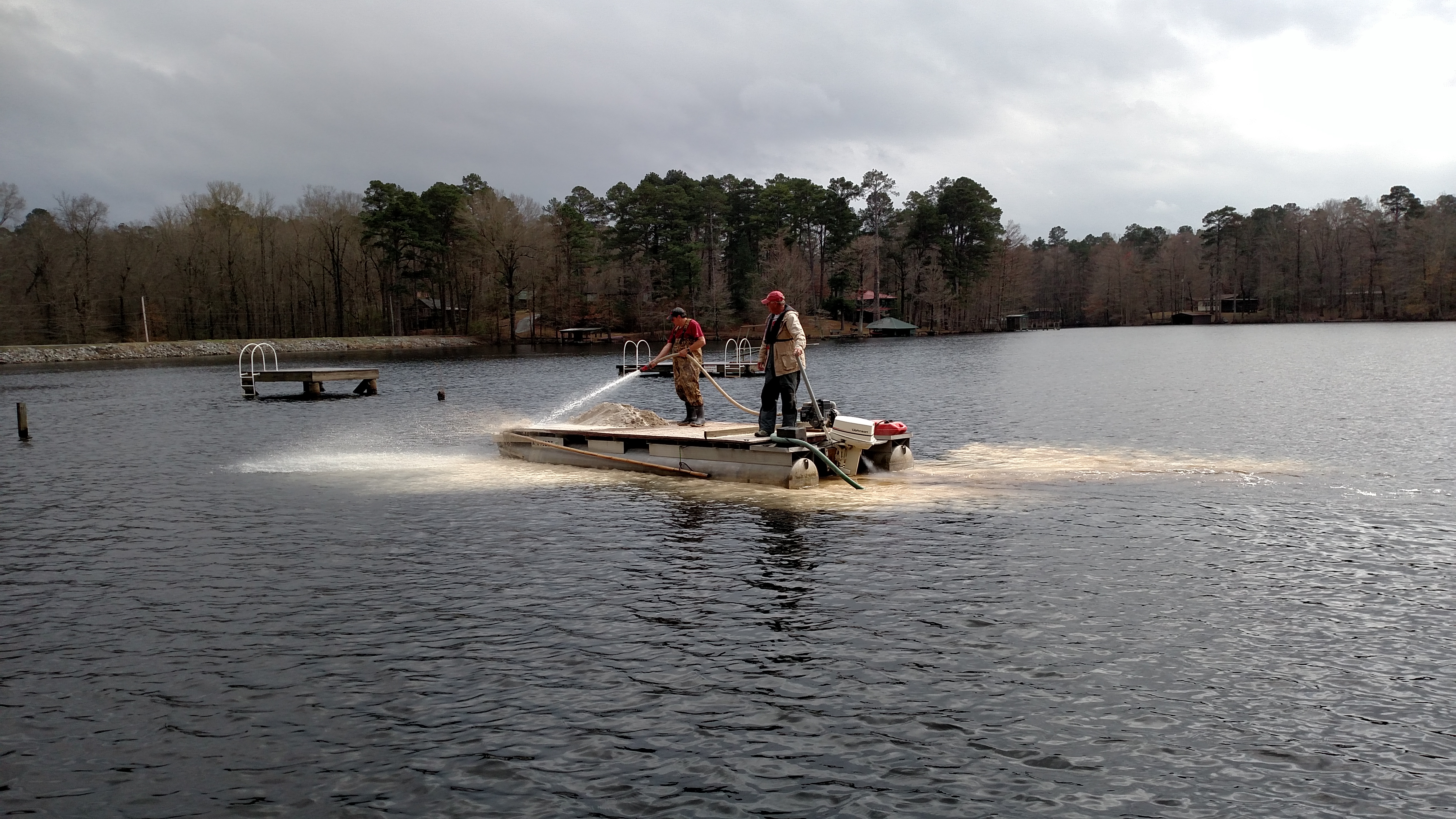Main Content

Water Chemistry

Agricultural lime can benefit ponds with acidic soil, low alkalinity, low hardness and low productivity. Applying agricultural lime (calcium carbonate CaCO3) to your pond neutralizes acidic soil, releases nutrients bound in the soil, stabilizes water pH, and generally leads to a healthier and more productive pond. Ponds with water alkalinity below 20 mg/L typically require at least 2,000 pounds of agricultural lime per acre to make a difference, and 4,000 pounds per acre is probably closer to the actual required amount. For a more accurate estimate of the amount of lime needed to neutralize soil acidity, a soil sample must be collected and sent for analysis. The analysis is free, but you will have to collect the sample and deliver it to a county Extension office yourself. The goal is to get a representative sample of the entire pond bottom, not just what you can reach from the shore. The chemical characteristics of the deep areas of the pond can be substantially different from that of the shallow areas. A sampling tool can be built from a long sturdy pole with a vegetable can firmly attached open-end down to the end of the pole. Take the sampling tool and cross the pond in an “S” pattern collecting 10 can-full’s of soil from all depths of the pond. Next, dump all the samples into one container and allow the soil to completely dry before delivering it to your county Extension office. Label your samples “Fish Pond” and request the lime requirement to bring the soil pH to 6.5, or ask for the lime requirement for growing Alfalfa. The soil pH necessary for healthy Alfalfa growth is very close to what is needed for a healthy pond. Ponds that need lime typically need reapplication about every 4 years or sooner if water turnover is high. It is ok to add more agricultural lime than recommended, it will just extend the time before another application is needed. It is best to spread the agricultural lime along the entire pond bottom and till it into the soil before the pond is filled with water. The next best approach is to spray the lime from a boat or barge platform with a high pressure water hose as the craft is moving around the pond in a grid pattern. Pouring the agricultural lime into the pond from the shoreline is not an effective technique, but it is better than nothing if the previous two methods are not practical. In ponds already full of water, it is best to apply agricultural lime in the fall as temperatures are cooling and plant growth has stopped. Calcium carbonate will bind to phosphorus, the most important aquatic plant nutrient, and temporarily lock it in the pond mud. If this happens during the growing season, water can clear and rooted aquatic plant problems can develop or become worse. Applying the agricultural lime in the fall reduces the chance of disrupting the plant community in the pond.
What to read next:
-
Fertilization
-
Feeding
Additional resources:
-
SRAC 4100 Liming Ponds for Aquaculture
-
SRAC 0464 Interactions of pH, Carbon Dioxide, Alkalinity and Hardness in Fish Ponds
-
SRAC 4606 Interpretation of Water Analysis Reports for Fish Culture